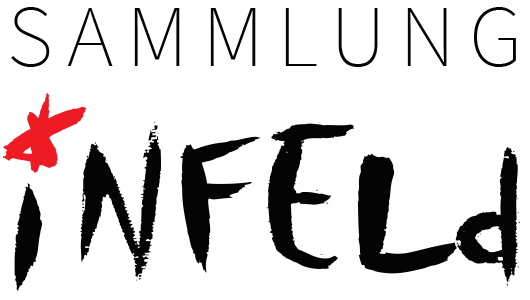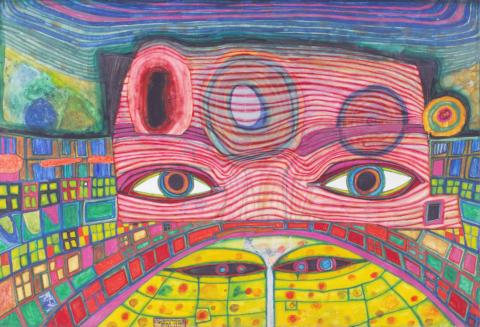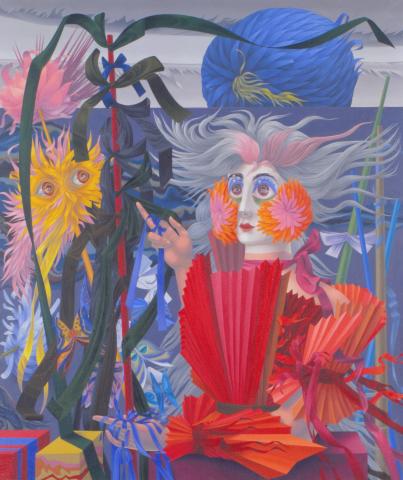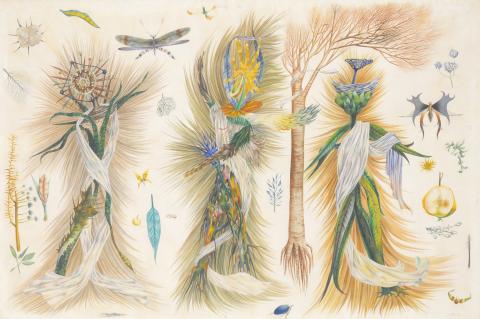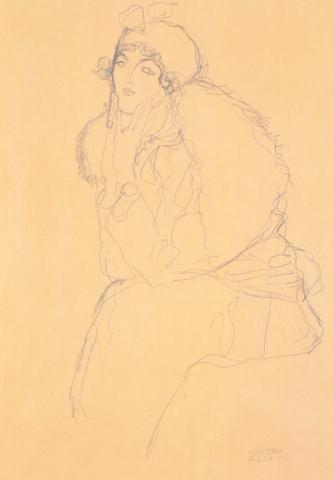Woman power
The exhibition “Woman Power” in the Infeld Haus der Kultur in Halbturn brings together works of art, sculptures and sacred art objects. Created in Europe, Asia and Africa, the works show characteristic aspects of the representation of women in art.
How has the view of women changed over the decades in connection with the progressive detachment from traditional gender roles? The approximately 70 exhibited works by 34 art-ists that cover 100 years of art history offer suggestions for seeing and thinking about old ideas and patterns in a new way.
The show starts with artists from Vienna around 1900 such as Koloman Moser and Gustav Klimt with their refined presentations of female beauty, as well as the Tyrolean Alfons Wal-de with his women in traditional dresses. The fascination of the female body can be seen in the art works of the Croatian painter Edo Murtic, the filmmaker Kurt Stenvert and female positions such as Martha Jungwirth.
The works of the Viennese fantastic realists provide an exciting report on the daily journeys into one's own imagination in colours and shapes. One of them, Wolfgang Hutter (“Dragon’s Bride”, “The Sorceress”, “Plant Ballet”) is considered an “eye-voluptuary” and “attentive dreamer, a scenarist of secret desires and longings”. He completes his dream landscapes with female figures who have no concept of original sin and guilt. The works activate the eye and the imagination of the viewer. Ernst Fuchs (“Gütersloh and the Muse”), Arik Brauer (“Dancer in a Flower Skirt”) and Benedetto Fellin (“Veiled Muse”) continue the parcours with works from the Infeld Collection.
The exhibition places a particular emphasis on two works by Croatian artists that show women as powerful hybrid creatures. The painter Boris Bucan (1947-2023) designed the poster for “Firebird”, the ballet by Igor Stravinsky in the Croatian National Theater in Split in 1982. The work became a recognizable motive in contemporary Croatian culture. Boris Bu-can's “Firebird”, painted with oil on canvas, is part of the exhibition.
The “Cat” by the sculptor and painter Marija Ujevic is one of the most beautiful Mannerist sculptures in contemporary Croatian art. Once you have seen it, you will never forget it: the female body is heavily twisted and has no arms, the cat's head has no facial features.
Another focus of the show are African figures. With its strong expressiveness and design lan-guage, traditional African art fascinated and inspired artists like Pablo Picasso at the begin-ning of the 20th century. The female figures are a combination of form, origin and meaning, they open a gate into a strange and fascinating world full of traditions, mysterious rituals, and lived spirituality.
Created exclusively in a religious or social context, the figures were often the object of ado-ration and veneration, used in communication with the ancestral world and in the fulfilment of wishes. This spiritual element explains their powerful, magical charisma. African cult ob-jects are seen as art in the aesthetic sense by the Western world at the beginning of the 20th century.
Meditation paintings from Tibet (so-called “Thangkas”) and musical instruments such as the violin, whose shape imitates the female figure and was considered as a symbol of the fe-male body in the Dutch Baroque period, viola, viola d'amore, and guitar round off the exhi-bition.

